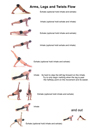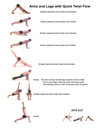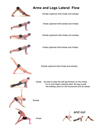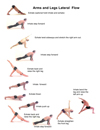YOGA POSTURES  ASANA
ASANA  YOGA POSES
YOGA POSES  YOGA POSITIONS
YOGA POSITIONS
Yoga posture – Adho Mukha Dandasana
Translation: Downward Facing Staff Pose
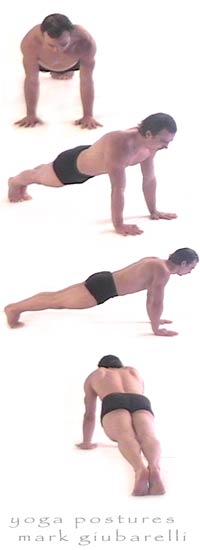
![]()
From a position on the hands and the knees step the legs back placing the ball points of the feet on the mat then push the legs together. Put your hands flat on the mat, shoulder-width apart, with your elbows straight.
![]()
Keep your legs straight behind you.
![]()
Keep your back straight and your head forward. Draw the navel in and up. Tuck the tailbone forward.
![]()
Variations
Place the knees on the mat if the body does not have the strength to hold up with the arms alone. Or take the knees down from time to time when the arms fatigue.
![]()
Tips
Glance down at the abdominal muscles and check the alignment. Adjust accordingly. Glancing over yoga postures can be quite revealing.
![]()
Stretch back through the heels and forward through the top of the head.
![]()
![]()
Try to lengthen the arms away from the body to stop any pressure within the shoulder joint. Make sure the palm are evenly balanced on the mat.
![]()
![]()
Pay attention to the space around the neck. Feel for areas of compression and modify the neck position so that energy and the elements flow through clearly.
![]()
![]()
Use the element of fire by applying extra force through the fingers to protect the wrists. The force is applied through the extensor muscles in the
forearm to create a slight lift in the wrists allowing elements of space, air and water to flow.
![]()
Practice yoga at home with a printable Home yoga flow showing this pose blended with other yoga poses.
![]()
Benefits
This pose increases strength, balance and stability by developing many arm muscles and shoulder muscles. Trapezius muscles and serratus muscles hold the scapula in place while major muscles such as serratus anterior muscles, located in the posterior sides of the body, hold the body up while arm muscles such as the triceps, biceps and many muscles in the forearms and wrists aid in this support. Other major muscles that hold the body up are the pectorals and lower down the abdominal muscles.
![]()
![]()
Muscles such as the deltoids muscles, the scapular muscles and rotator cuffs which are made up of four muscles thesupraspinatus, infraspinatus, subscapularis, and teres minor and teres major are all contracted during this exercise therefore they are all strengthened.
![]()
![]()
The legs also play a role in supporting the body. The many muscles in the legs are strengthened by performing this yoga pose.
![]()
![]()
Vinyasa Yoga Sequencing and Flowing
Vinyasa Yoga postures to transition from and to:
![]()










![]()
Adho Mukha Dandasana Parsva Dandasana Chaturanga Dandasana Astangasana Salabhasana Bhujangasana Adho Mukha Svanasana Eka Pada Adho Muka Svanasana Cat Flow Balasana
![]()
![]()
Yoga Teacher Tips
Build up the arm strength of your students with yoga poses like this before attempting things like the handstand. ![]()
![]()
“Offer easy options for students that have weak arm strength, wrist injury or just general discomfort. Offering variation can reduce suffering during class. At the same time motivate practitioners to push a little further and test boundaries sensibly.”
![]()
![]()


